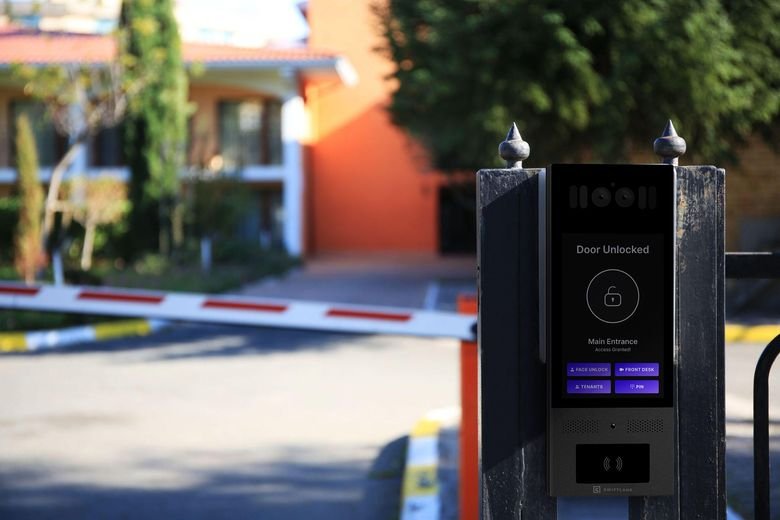Creating a blog that attracts a loyal readership and ranks well on Google requires a combination of strategy, consistency, and smart SEO practices. In 2025, simply publishing content isn’t enough. With the competition growing, you need a clear plan to ensure your blog stands out and performs well in search engines. This article outlines the essential steps to create a blog that not only captures the attention of your audience but also ranks high on Google.
1. Choose a Profitable Niche with High Demand
The foundation of a successful blog lies in selecting the right niche. In 2025, it’s crucial to pick a niche that aligns with your passions but also offers market demand. A specific niche helps target a defined audience, which increases your chances of success.
Key Considerations:
-
Market Demand: Research topics using tools like Google Trends and Ahrefs to identify areas with high search volumes but relatively low competition. A profitable niche ensures your content has the potential to reach a wide audience.
-
Personal Interest and Expertise: Choose a subject you are passionate about and knowledgeable in. This will allow you to create authentic and high-quality content, which is essential for long-term success.
-
Monetization Potential: If your goal is to generate revenue, choose a niche that offers opportunities for affiliate marketing, sponsored posts, and digital products.
Why It’s Important:
-
Targeted Audience: A focused niche helps you cater to a specific audience, allowing you to build a loyal following.
-
SEO Optimization: Niche-specific content is more likely to rank for targeted keywords, making it easier to drive organic traffic.
2. Set Up Your Blog on a Reliable Platform
Once you’ve chosen your niche, it’s time to set up your blog on a platform that supports SEO and is easy to manage. WordPress remains the most popular and versatile blogging platform in 2025.
Platform Setup Tips:
-
Choose WordPress: WordPress is SEO-friendly and offers a wide range of themes and plugins. It’s flexible, customizable, and scalable for future growth.
-
Pick a Domain Name: Choose a domain name that reflects your niche and is easy to remember. Ideally, include your target keyword for SEO benefits.
-
Use a Mobile-Friendly Theme: Since Google prioritizes mobile-first indexing, choose a responsive theme to ensure your blog performs well on all devices.
-
Invest in Quality Hosting: A reliable hosting service, like Bluehost or SiteGround, ensures fast loading times, which is essential for SEO.
Why It’s Important:
-
SEO Performance: WordPress offers built-in SEO optimization tools, making it easier to implement best practices for ranking on Google.
-
User Experience: A fast, mobile-friendly website ensures a positive user experience, which leads to longer site visits and lower bounce rates.
3. Create High-Quality, SEO-Optimized Content
Content is the core of any successful blog. In 2025, creating high-quality, valuable content is more important than ever for attracting and retaining readers while boosting SEO.
Content Creation Tips:
-
Keyword Research: Use tools like SEMrush and Google Keyword Planner to identify long-tail keywords relevant to your niche. Incorporate these keywords naturally into your blog posts.
-
Engaging and Informative: Focus on providing value by solving problems or answering common questions your audience has. Content should be detailed, insightful, and easy to read.
-
Content Length: Longer posts (1,500+ words) tend to perform better in search rankings. Google prefers comprehensive content that thoroughly covers a topic.
-
Use Headers and Subheadings: Break your content into sections using H1, H2, and H3 headers to make it easier for readers and search engines to digest.
Why It’s Important:
-
SEO Rankings: Well-researched and optimized content ranks higher on Google, driving more organic traffic.
-
User Engagement: High-quality content keeps readers on your site longer, increasing engagement and the likelihood of shares, which can improve your rankings.
4. Optimize for On-Page SEO
On-page SEO is vital for ensuring your blog content is discoverable by search engines. Optimizing your posts ensures that Google can easily index and rank your content.
Key On-Page SEO Techniques:
-
Title Tags and Meta Descriptions: Include your primary keyword in the title tag and meta description, ensuring they’re compelling and within the optimal character limits (50-60 characters for titles and 150-160 characters for meta descriptions).
-
URL Structure: Keep URLs short, descriptive, and include your target keyword. Avoid long, complicated URLs.
-
Internal Linking: Link to other relevant blog posts on your site to help readers find related content and reduce bounce rates. Internal links also help Google understand the structure of your website.
-
Image Optimization: Use alt text for all images with relevant keywords. Compress images for faster loading speeds.
Why It’s Important:
-
SEO Visibility: Proper on-page SEO ensures that search engines can easily understand and index your content, increasing your chances of ranking higher.
-
Better User Experience: SEO optimization, like fast-loading images and clear navigation, enhances the overall user experience, keeping visitors engaged and improving your rankings.
5. Focus on Backlink Building
Backlinks remain one of the most significant ranking factors for Google. High-quality backlinks from authoritative websites signal to Google that your content is trustworthy and relevant.
Effective Backlink Strategies:
-
Guest Blogging: Write guest posts for reputable blogs in your niche. In return, ask for a backlink to your blog.
-
Collaborations and Partnerships: Collaborate with influencers, thought leaders, or other bloggers in your industry to increase your site’s credibility and gain backlinks.
-
Create Shareable Content: Infographics, in-depth guides, and original research are more likely to be shared, naturally earning backlinks from other websites.
Why It’s Important:
-
Domain Authority: Backlinks from authoritative websites increase your blog’s domain authority, improving your chances of ranking higher on Google.
-
Referral Traffic: Backlinks also drive traffic directly from other sites, increasing visibility and exposure.
6. Promote Your Blog Through Social Media
Social media is a powerful tool for driving traffic to your blog and increasing visibility. Promoting your blog on platforms like Instagram, Twitter, and LinkedIn can help you reach a larger audience and engage with readers.
Social Media Promotion Tips:
-
Share Valuable Content: Regularly share your blog posts on social media and encourage followers to engage with them by liking, commenting, or sharing.
-
Engage with Your Audience: Respond to comments, join discussions, and build relationships with your followers to create a loyal community around your blog.
-
Use Hashtags: Leverage popular hashtags relevant to your content to increase your reach and make your posts discoverable to a wider audience.
Why It’s Important:
-
Increased Traffic: Sharing your content on social media helps drive more traffic to your blog, improving its visibility and SEO.
-
Brand Building: Consistent social media engagement helps establish your blog as a trusted source of information, building a loyal following.
7. Monitor and Analyze Your Blog’s Performance
Tracking and analyzing your blog’s performance is essential for growth. By monitoring metrics, you can identify what’s working and what needs improvement.
Analytics Tools:
-
Google Analytics: Track key metrics like traffic, bounce rate, and user behavior to understand how visitors interact with your content.
-
Google Search Console: Use Search Console to monitor your website’s performance in search results, track keyword rankings, and fix any crawl errors.
-
Social Media Analytics: Use platform-specific analytics to track engagement on social media and identify which posts perform best.
Why It’s Important:
-
Continuous Improvement: Regular analysis helps you refine your content strategy and SEO efforts, ensuring that your blog continues to grow and improve.
-
Data-Driven Decisions: Monitoring performance allows you to make informed decisions about what type of content to create next, which keywords to target, and where to focus your promotional efforts.
Conclusion: Building a Blog That Attracts Readers and Ranks on Google
Creating a blog that attracts readers and ranks well on Google in 2025 requires a combination of strategic planning, consistent effort, and SEO best practices. By selecting a profitable niche, creating high-quality content, optimizing for on-page SEO, building backlinks, and promoting your blog on social media, you can increase your chances of success. Regularly monitoring your blog’s performance and adjusting your approach will ensure long-term growth and visibility. Follow these steps, and you’ll be on your way to building a blog that not only attracts readers but also ranks high on Google.




